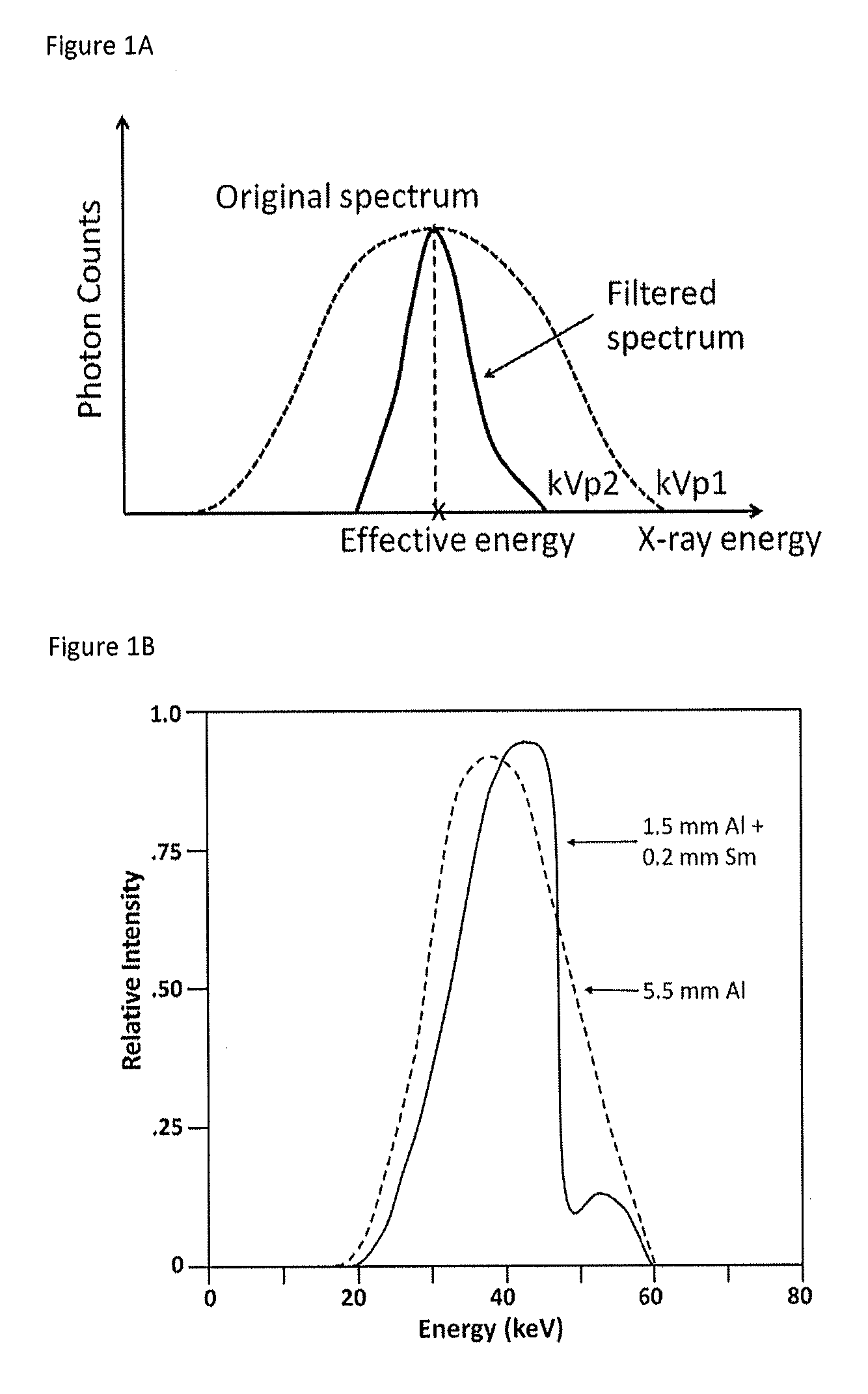Method and apparatus of spectral differential phase-contrast cone-beam CT and hybrid cone-beam CT
a phase-contrast cone and phase-contrast technology, applied in tomography, image enhancement, instruments, etc., can solve the problems of relatively low sensitivity of mammography to small breast cancer (under several millimeters), sharp decline in the probability of metastasis, and limited specificity and positive predictive value of mammography. achieve the effect of increasing spatial resolution
- Summary
- Abstract
- Description
- Claims
- Application Information
AI Technical Summary
Benefits of technology
Problems solved by technology
Method used
Image
Examples
second embodiment
[0082]It should be noted that the analyzer grating 208 does not have to be an attenuation grating as that for the Instead, it could be a second phase grating that produces significant phase change but negligible amplitude change. A phase-phase grating pair will also produce similar moiré patterns if the detector is placed at an appropriate location, which could be a fractional Talbot distance or an integer Talbot distance.
[0083]The third preferred embodiment is a variation of the first preferred embodiment where the beam filter 103 is removed and the detector is an energy-resolving detector 130. Such a system works in the same way as the first preferred embodiment except that by recording images in different energy channels, it can perform spectral DPC and spectral DPC-CBCT imaging as described in the second direction. This embodiment is shown in FIGS. 7A-7D.
[0084]The fourth preferred embodiment is a variation of the second preferred embodiment where the beam filter is removed and ...
embodiment 600
[0097]The sixth preferred embodiment is a variation of the hybrid system as shown in FIGS. 11A and 11B. FIG. 11A shows the cone beam CT breast imaging system as disclosed in U.S. Pat. No. 6,480,565 “Apparatus and method for cone beam volume computed tomography breast imaging” (Ning '565), and the hybrid cone beam CT system is supposed to replace the cone beam CT system beneath the patient table to perform hybrid breast imaging. FIG. 11B is actually a combination of the moiré pattern-based system (second preferred embodiment) and the current CBBCT system. CBBCT system images the breast only using a half-cone geometry in which x-ray radiation radiates the breast only without penetrating chest cavity or other body parts of the patient, resulting in substantially reduced radiation to the patent. It should be noted that as no stepping is required in the system 600, it can perform fast data acquisition, which makes dynamic imaging possible using this system. As illustrated, the embodiment...
embodiment 700
[0098]The seventh preferred embodiment is a variation of the hybrid system as shown in FIGS. 12A-12E. FIG. 12A shows the cone beam CT breast imaging system as disclosed in U.S. Pat. No. 6,480,565 “Apparatus and method for cone beam volume computed tomography breast imaging” (Ning '565), and the hybrid cone beam CT system is supposed to replace the cone beam CT system beneath the patient table to perform hybrid breast imaging. FIGS. 12B, 12C, 12D and 12F are actually combinations of the phase stepping-based spectral DPC-CBCT system using an energy-resolving detector (the third preferred embodiment) and the current CBBCT system. As illustrated, the seventh preferred embodiment 700 includes CBBT X-ray tube 720 and CBBT detector 722, and gantry 724. The CBBCT system images the breast only using a half-cone geometry in which x-ray radiation radiates the breast only without penetrating chest cavity or other body parts of the patient, resulting in substantially reduced radiation to the pat...
PUM
| Property | Measurement | Unit |
|---|---|---|
| diameter | aaaaa | aaaaa |
| size | aaaaa | aaaaa |
| size | aaaaa | aaaaa |
Abstract
Description
Claims
Application Information
 Login to View More
Login to View More - R&D
- Intellectual Property
- Life Sciences
- Materials
- Tech Scout
- Unparalleled Data Quality
- Higher Quality Content
- 60% Fewer Hallucinations
Browse by: Latest US Patents, China's latest patents, Technical Efficacy Thesaurus, Application Domain, Technology Topic, Popular Technical Reports.
© 2025 PatSnap. All rights reserved.Legal|Privacy policy|Modern Slavery Act Transparency Statement|Sitemap|About US| Contact US: help@patsnap.com



